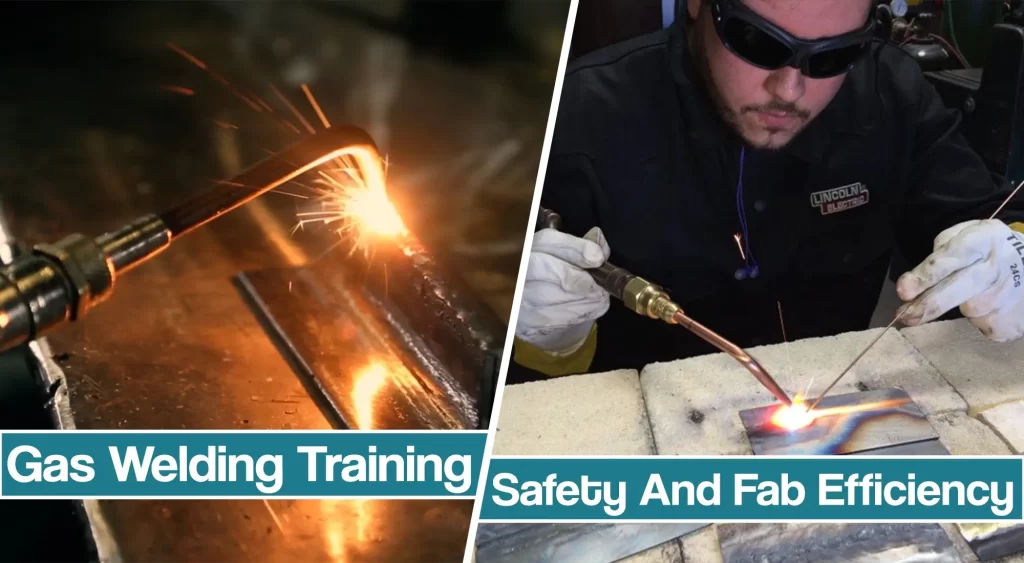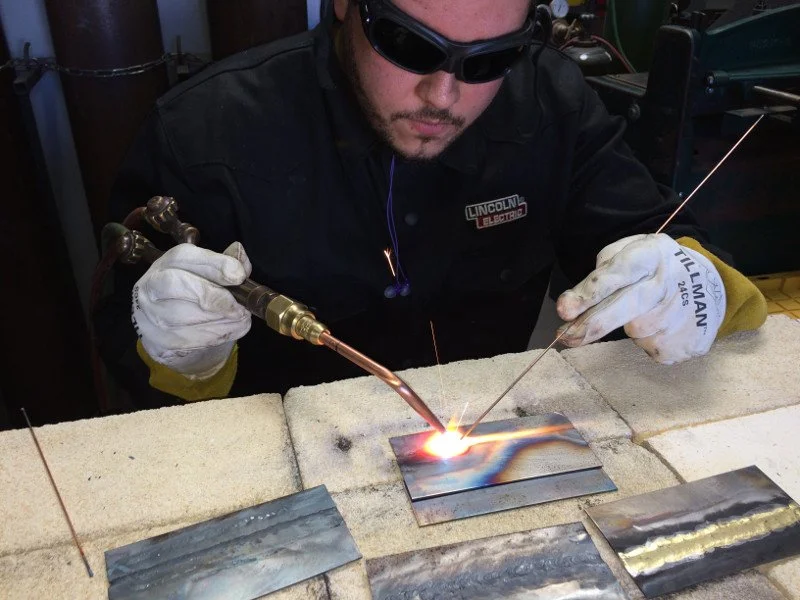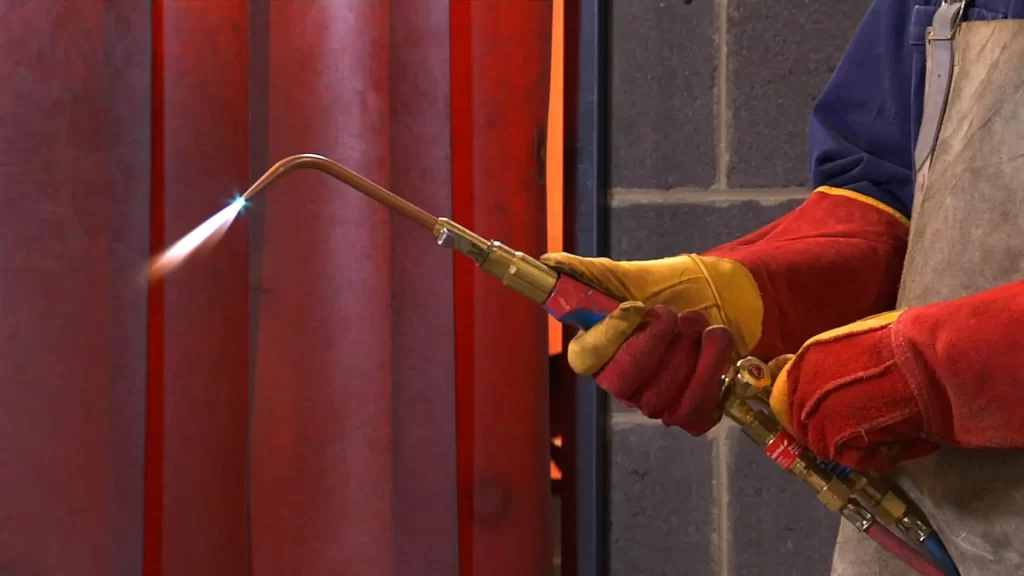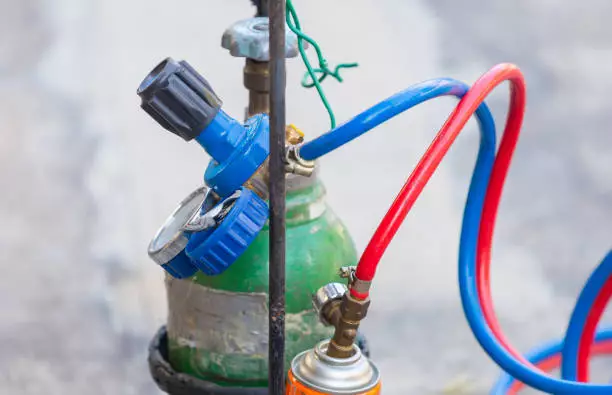Knowledge about fundamentals, applications, processes, and safety is power — and a two-way street — in the welding industry.
Many people have worthwhile information to offer and need guidance within an area of expertise and, in effect, people are both resources who can provide that information and, on the other side, represent opportunities for which knowledge can be offered.

When it comes to gas systems, equipment, and gas welding training, you often see a group of employees on the shop floor watching intently as an industry veteran demonstrates “how to.” Or, it may be a in a welding school environment in which an expert makes a formal presentation.
These older training methods are being transformed into electronic, Web-based media presentations that can be viewed at multiple sites and at different times. The significant advantages of these new methods of training include reduced travel costs and maximized workplace productivity.
Gas Welding Training – Mini-training Sessions
Training today often consists of “out of the box” one-on-one mini sessions via phone or online sessions using zoom and similar applications.
As indicated, there are several advantages of such training. These advantages include the fact that the training sessions fit the needs of the individual, they cover a variety of subjects on processes and systems and can be very basic or advanced, and they can cover difficult-to-understand topics such as compatibility of equipment, safety, and efficiency, among a host of others.

In welding, a complete understanding of the basic safety and functionalities of the gases and equipment used is requisite.
A practical solution is to have a manufacturer’s representative or a distributor as a resource partner who can help to educate and train employees as to what must be done in specific applications to keep personnel safe and systems running correctly.
Typically the manufacturer’s representative sets up training for a distributor who then analyzes the system and recommends appropriate corrective action.
Gas Welding Training 101
Training should provide an understanding of the process and safety requirements. This is going to focus specifically on gas equipment and oxy-fuel welding processes.
Understanding basics is vital for operation and assists with decision-making in other areas, such as when to make a gas mode change.
The following are key training points to consider for understanding systems, processes, and safety requirements.
Gas Handling and Operational Efficiency
The first objective is efficiency, and the first question should be “How can the return on investment be maximized for gas equipment?”
A well-planned process for gas welding equipment begins with research and an understanding of the oxy-welding process requirements for which the equipment is to be used.

Starting that research and gaining that understanding requires the use of multiple sources such as an experienced co-worker, the equipment operator, purchasing and engineering personnel, and vendors.
High-pressure gas cylinders offer lower productivity because of the downtime associated with changing an empty cylinder. However, one consideration for this type of equipment is that many gas suppliers offer free cylinder replacement to reduce the chances of personnel injury while maintaining productivity.
A central gas supply system will eliminate the cylinder in each weld location and the associated individual cylinder handling, but up-front costs include such items as gas manifold equipment, piping systems, fencing, and, possibly, concrete systems needed as a base for the equipment.
Gas Mode Change
Typically a mode change is defined as transitioning from one gas source to another because of higher on-site capacity, less handling, and lower product costs.
When making a gas mode change, the user should also evaluate new technologies, for example, plasma, water jet, or laser cutting in place of traditional oxygen-acetylene cutting.

Considering the current economic climate, and the limited availability of capital, the return on investment may be diminished if a minimal investment is made toward understanding the ways that new technologies affect productivity.
Unfortunately, analysis can be cumbersome, but it is time well spent.
Helping Welding Shops Select Gas Equipment
For distributors, when a customer welcomes you into a facility and asks that you help him to get his shop running ‘lean, mean, and safe,’ a safety and performance audit (SPA) can be an effective analysis tool. Here are the critical aspects of the SPA.
- Understanding how the job shop currently does things by looking around and taking notes;
- Looking for safety issues that could cause injury and addressing them immediately;
- Evaluating processes currently used and looking for opportunities to upgrade to a more efficient process/supply mode.
The safety and performance audit should include an evaluation of current equipment assets, gases and processes and includes key economic variables including cylinder inventory, rental charges, and compliance and delivery fees.
The safety and performance audit also should identify potential safety deficiencies and recommend upgrades to ensure the application complies with state and federal requirements.
Using the safety and performance audit as an outline, the shop owner can set up periodic equipment maintenance schedules, a fabrication safety checklist, step-by-step procedures, and instructions for operations and functions.
Now is the time to refine your manufacturing practices so that your shop will be positioned to weather troubled times and yield higher margins when the economy comes back.




